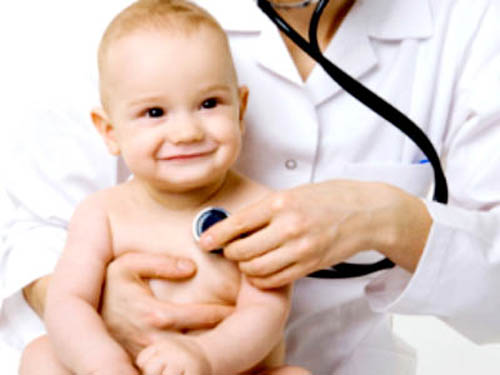Dr Arvind Kohli
Congenital heart defects are structural problems with the heart present at birth. They result when a mishap occurs during heart development soon after conception and often before the mother is aware that she is pregnant. Defects range in severity from simple problems, such as “holes” between chambers of the heart, to very severe malformations, such as complete absence of one or more chambers or valves.
Regular medical care is important for all children, but especially for those with congenital heart disease. A child with a heart defect usually gets through common childhood illnesses as quickly and as easily as children with normal hearts. Sometimes parents think that their child with heart disease will need more medicine to get through an illness but this is usually not true. Also, your child doesn’t need antibiotics to help prevent infections with a few notable exceptions (e.g., children with heterotaxy syndromes like asplenia or in some cases of Digeorge syndrome). Some parents think that giving their child antibiotics before the child is very sick will prevent the illness from getting worse. This also isn’t true and may make the infection more serious and more likely to be resistant to the antibiotic that’s given.
It’s best to remember that preventing infection starts with good hygiene, good nutrition and common sense. Frequent hand washing (or using water-free hand washes) especially during the cold and flu season and avoiding ill contacts is a good way to prevent illness. Try to avoid crowded settings like shopping malls.
Your child should have routine care and the standard immunizations that your doctor recommends for all children. Your child may also need additional immunizations, such as the influenza vaccine. If your child has certain heart defects, a special monthly immunization for a cold virus (RSV) may be recommended during the winter months.
Most children with heart defects need periodic heart checkups. Usually, they’re scheduled more often (days, weeks, months) just after the diagnosis or surgery and less often later. For minor conditions checkups may only be needed every one to five years. Depending on your child’s problem, periodic testing may be needed.
Preventing Infective (Bacterial) Endocarditis
* Infective endocarditis (IE – also called bacterial endocarditis [BED]) is an infection caused by bacteria that enter the bloodstream and settle in the heart lining, a heart valve or a blood vessel.
* Although IE is uncommon, children with some heart defects have a greater risk of developing it. Good dental hygiene goes a long way toward preventing heart infection by reducing the risk of a tooth or gum infection.
Most children with a congenital heart defect can be fully active and don’t need restrictions. In fact, pediatric cardiologists encourage children to be physically active to keep their hearts fit and to avoid obesity. Such healthful activities include swimming, bicycling, running, rope jumping and tennis. For a few specific heart conditions, a pediatric cardiologist may advise that your child avoid some strenuous physical activities and junior varsity or varsity competitive sports. It’s best to avoid activities that cause grunting or straining (medically referred to as a “valsalva maneuver”). This happens when a person bears down against a closed throat to increase the strength of arm or abdominal muscles. There’s often a tendency to do this when lifting heavy weights, doing sit-ups, push-ups or chin-ups, etc., but it may be harmful. Straining causes a sudden rise in blood pressure, which adds strain on the heart; it increases the pressure in the lungs, which can affect blood flow from the body into the lungs; and it often means there’s more force on the chest wall, and many congenital heart patients have surgical scars in the chest that can be damaged, particularly in the first year after surgery.
Feeding
Healthy babies usually double their birth weight between four and five months of age. Infants and children with congenital heart disease and congestive heart failure or cyanosis (blueness) tend to gain weight more slowly. An eight-ounce to one-pound gain in a month may be an acceptable weight gain for a baby with a heart defect. Parents sometimes think children with congenital heart disease need to eat special diets that are low in fat, similar to the low-fat diets recommended for adults with heart disease. In fact, since children with congenital heart disease often have poor appetites, high-calorie foods and sacks can play a very important role in providing good nutrition. Don’t restrict fat in the diet, particularly in the first two years of life. It’s needed to help children grow and develop properly. That’s why lower fat milks (2%, 1 % or fat-free [skim]) aren’t recommended until children are two years of age or older.
(The author is Heart Surgeon SSH Jammu)
Trending Now
E-Paper


